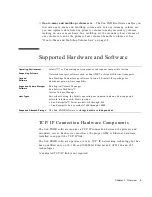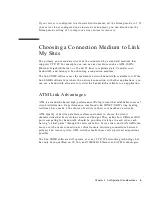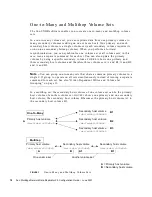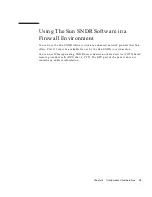
16
Sun StorEdge Network Data Replicator 3.0 Configuration Guide • June 2001
Using The Sun SNDR and Sun StorEdge Instant
Image Software
To help ensure the highest level of data integrity on both sites during normal
operations or during data recovery, use the Sun SNDR software with the Sun
StorEdge Instant Image software.
The Instant Image software is best used just before you perform a resynchronization,
to help ensure that a consistent copy of data exists. In this case, if the
resynchronization is interrupted, you at least have a copy of known good data that is
usable.
During the resynchronization process of updating the local and remote sites, the
data on a secondary Sun SNDR volume is temporarily inconsistent with the primary
volume. The secondary volume cannot be relied on for data recovery. Consistency is
restored when the resynchronization is complete. To help ensure data integrity, use
Instant Image software regularly to create a point-in-time copy of data at both sites.
See the Instant Image documentation listed in “Related Documentation” on page vii.
When to Use The Sun StorEdge Instant Image Software at the
Remote Site
In most cases, customers should also install Instant Image software at the secondary
site to protect against a dual failure. Before you resynchronize the primary site with
the secondary, take a point-in-time snapshot copy of the data. If failure the occurs
during the resynchronization, you have the point-in-time data copy to roll back to
and you can start again when its safe to do so.
Whenever a fast resynchronization is being performed, the I/O transfer is in block
order, not in I/O order. Therefore the volume being resynchronized will not be
consistent until the fast resynchronization has been completed and the volume is
back in replicating mode. If a point-in-time copy is not available at the remote site,
then the remote site recovery plan should cover the exposure that will exist during
the time required to perform the fast resynchronization.
Additionally, a point-in-time snapshot at the secondary site can be used for
applications such as remote backup, remote data analysis, or other functions.





































